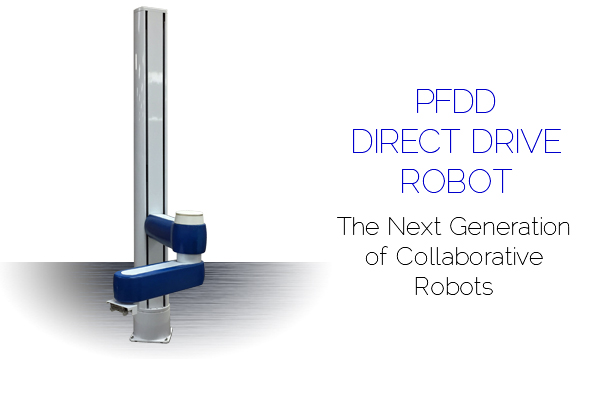 |
The growth of collaborative robots that can safely work side-by-side with people makes automation accessible to a new generation of applications. However, this accessibility has often come at the cost of higher prices for special sensors, reduced repeatability, and dramatically reduced cycle times. Precise Automation's line of direct-drive collaborative robots provides the features, price and repeatability offered by traditional robots with the ease-of-use of popular collaborative robots. |
|
SAFE MIXED MANUFACTURING ENVIRONMENT
These new robots feature direct-drive motors in the base and elbow and a low-ratio belt drive for the Z axis, allowing low-friction teaching and eliminating the large collision forces resulting from harmonic-drives. This patented design allows the robots to move at speeds comparable to people, even when operators are present in the workcell, while still limiting forces to the ISO collaborative robot standard. Thus, operators can move freely around the robot without concerns for their safety or reducing the robot's productivity. |
|
HIGHER SPEED & SPACE SAVING DESIGN
Compared to vertically-articulated robots, the cylindrical working volume of these robots requires a much smaller footprint. The outer link moves under the inner link, allowing the robot to move from side to side without swinging the tool through a large radius. This permits higher speed tool motions with lower kinetic energy, since the arm is "tucked in", which further minimizes collision forces and improves performance. |
|
IDEAL FOR MOBILE APPLICATIONS
These robots have all of their controls and power supplies located inside the robot, so there is no need to house a large robot controller on the mobile platform. Also, as compared to common place vertically articulated robots, the geometry of these robots has a much lower overhanging moment while offering a much larger useable working volume. This geometry also significantly reduces the energy requirements to operate these robots and hold them in place, which is a significant advantage in battery powered applications. These features make these robots ideal for mobile applications. Patent US 10,029,369, US 10,173,323 & US 10,252,420 |

